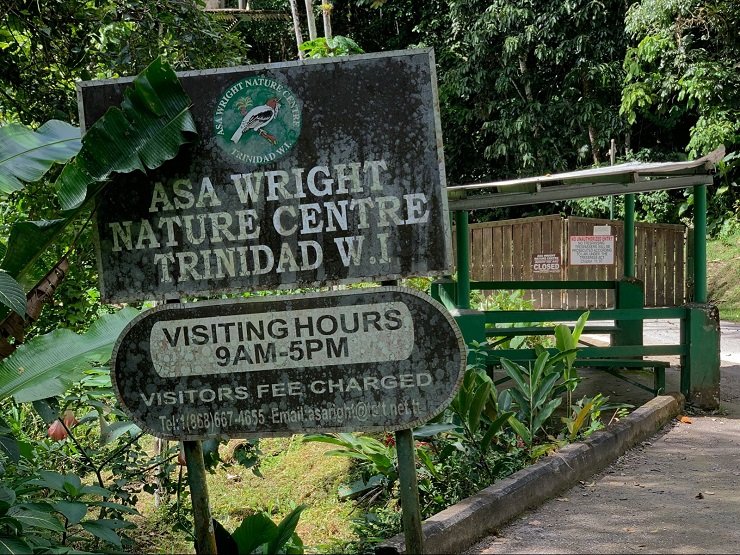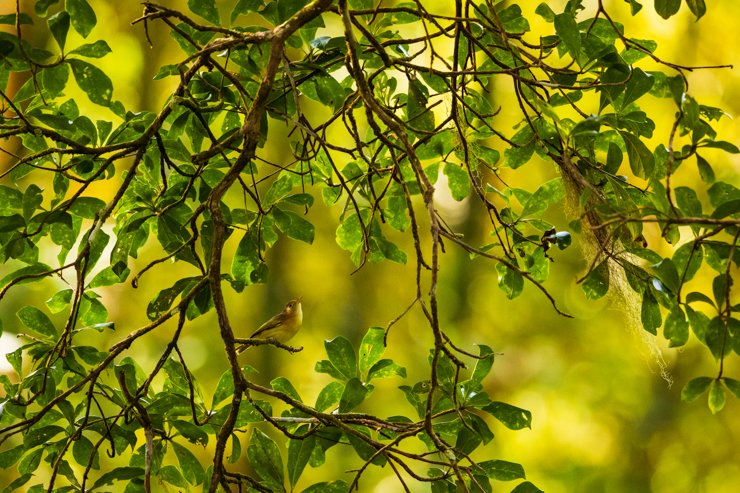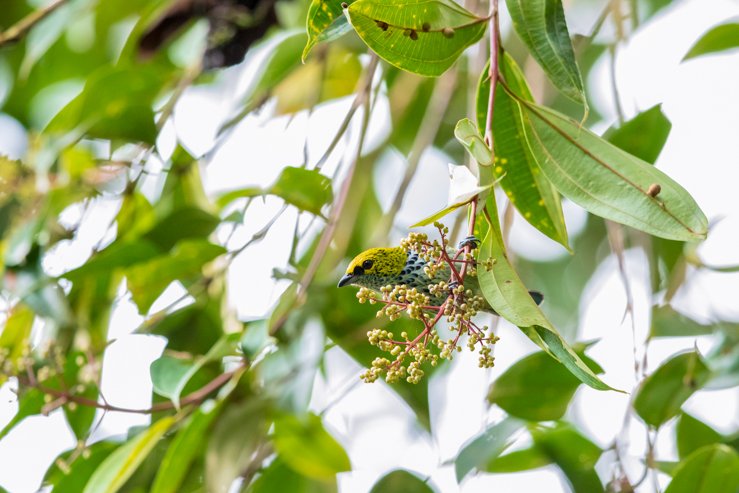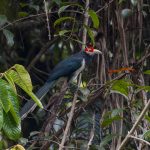
Last weekend we headed into the mountains of northern Trinidad – the concept of mountains is surely a relative one, although it is the highest conglomeration of hills in the country (and the northernmost outcrop of the Andes) the Northern Range never crosses 1,000m above sea level. While cloud forest exists above 700m, the majority of the mid-elevation forest is humid montane rainforest. The Arima-Blanchisseuse Road bisects this mountain range from sea level up to just above 600m. Ascending further requires a hike – required to see some high-elevation species absent from elsewhere on the island.
For us on a casual Sunday drive however, we chose to stick to the road. Laziness definitely played a part in the decision but truth be told we were happy to simply be in the presence of the forest as it has been many moons since that happened. We left home a little later than planned, and therefore began the climb about half an hour after sunrise. I was re-learning how to navigate a manual vehicle, sipping coffee, and enjoying the crisp air thick with the scent of the mature rainforest. For many a moment I contemplated doing an eBird list but I never started it for fear of having our day end up being yet another flurry of activity. It was more of a therapy session than anything else.
Those of you who have ever traversed this road know of the massive quarrying operation underway. Huge swathes of mountain have been blasted away with dynamite and there is an endless stream of trucks and heavy equipment toting the earth to numerous mega-projects at various places in the country. After the quarries, the road narrows significantly and snakes around tight corners. On one side of the road there is thick vegetation with Rufous-breasted Wrens belting their sweet song, the other side gives way to a precipitous drop. A few minutes later the vacant Asa Wright Nature Centre comes into view from across the valley, one can stop and view the silent verandah with a half-decent pair of binoculars. No birders inside, no feeders overflowing with hummingbirds and honeycreepers outside.

The eerie entrance to Asa Wright, a feeble whimper of what once was.
About 15 minutes later, we pulled off the road at the crest of the hill to have breakfast. The machine-gun drumming of a Chestnut Woodpecker greeted us once we alighted from the vehicle. No visual on the woodpecker, sadly – several Scaled Pigeons bolted from the treetops as we searched, though. Just about then I realized that I had forgotten to pack spoons when packing breakfast. I wasn’t amused, neither was my wife. But necessity is the mother of invention and some camera battery covers doubled up as spoons to ensure that our stomachs could stop their grumbling!

A vocalizing Cocoa Woodcreeper flew in on its foraging route.

There were several Golden-olive Woodpeckers around, before we left this particular location we also got a good view of a Lineated Woodpecker drumming on a dried piece of bamboo.
There were numerous other passerines I hadn’t seen in months flitting about: Violaceous Euphonia and Golden-fronted Greenlet were by far the most ubiquitous. A Great Antshrike called from deeper within the forest. Even further off I heard the plaintive wail of a Little Tinamou and the soft whistle of a Black-faced Antthrush. Channel-billed Toucans were calling from a short distance away and a Bearded Bellbird bonked in an adjoining valley. I felt as if I was reacquainting myself with old friends.

Golden-fronted Greenlet

This strange looking hummingbird turned out to be a Rufous-breasted Hermit with some aberrant plumage.
After our breakfast settled we drove further north along the Arima-Blanchisseuse Road, crawling along as we had our eyes and ears out. As we rounded a corner Joanne spotted a pair of Slaty-capped Flycatchers perched at the side of the road. I pulled over, but they flew almost directly overhead. I was attempting to get a view on them from about 100m away when she whisper-yelled “Speckled Tanager behind you” – let’s just say that I have to wait some more time until I get a photograph of any Slaty-capped Flycatcher.

Speckled Tanager
That spot where we pulled over turned out to be particularly productive. More than a few Stripe-breasted Spinetails called and called from obscured perches. One flew from one thicket to another where it flushed a Plain Antvireo from its hiding place.

Plain Antvireo
Both White-bearded and Golden-headed Manakins were around in good number. An Euler’s Flycatcher made a brief appearance as well.

White-bearded Manakin

Euler’s Flycatcher
If the action within the vegetation wasn’t enough, a pair of White Hawks was circling overhead. Shortly thereafter we also saw a Common Black Hawk, possibly riding the same thermal.

White Hawk
A few minutes later, activity at this spot fell quiet, so we continued on our journey. Stopped briefly at a small roadside waterfall where we enjoyed observing a medium-sized centipede methodically hunt, finally being rewarded for its efforts after approximately 15 minutes.
By this time, the sun was nearing its zenith, and we were seeking a spot to have lunch. Yes, meals are a high priority for us when we’re going birding! It just was coincidental that our chosen lunch spot was also abuzz with avian activity.

One of a small group of Yellow-legged Thrushes we spotted feeding in the trees.
We ended up heading back to civilization not too long after lunch as responsibilities beckoned. It was already early afternoon and activity was on a lull anyway. I promise to return there soon – next time I’ll be sure to eBird it!













That image of an abandoned Asa Wright is heartbreaking. But at least the amazing birds are still there to be enjoyed!
What Happened to ASA WRIGHT@@!!!???
Agree with Mike but…. ???
Timothy – Asa Wright has been closed since March 2020 and is yet to reopen. We’re all hoping for the best!
I see an announcement was made in December that the ecolodge at Asa Wright would be re-opening in spring, 2022 under new management, a conglomerate that wants to branch out into ecotourism. Any thoughts, Faraaz?
Hi Donna – I’m happy that Asa Wright has a future ahead, but I can’t say that spring 2022 is realistic! Definitely during this year but more likely later on. I’m fairly certain that the lodge is now in capable hands.